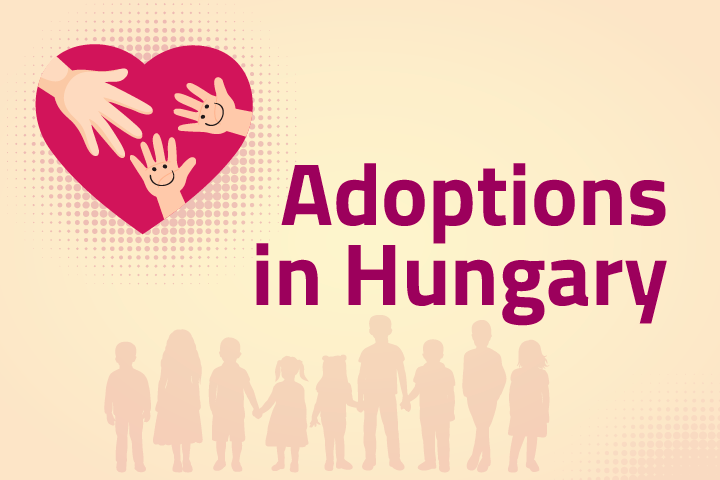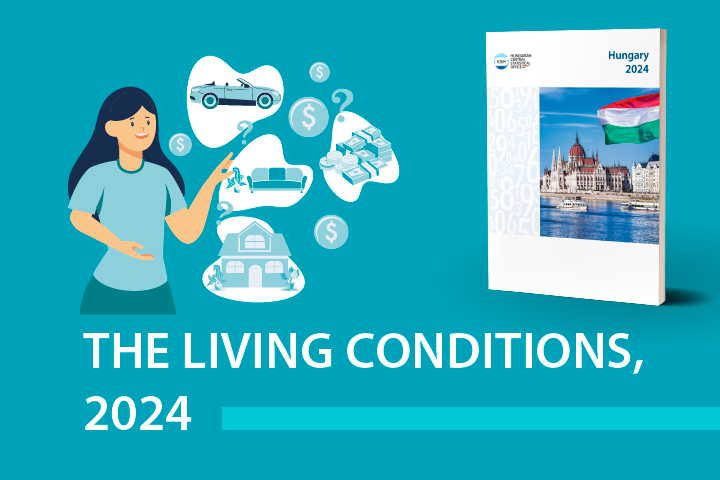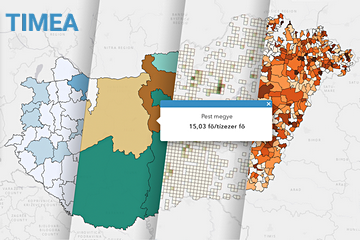Social care protection
Certain members of the society are entitled to certain benefits, provided in cash, in kind or as institutional social services, on a universal basis or on the basis of need or the principle of merit. Welfare statistics takes into account the system of institutions and benefits related to illness, old age, survivors, child raising, family and children, unemployment, housing and social exclusion, as well as the sources of their maintenance.
Key figures
Social protection benefits as a percentage of GDP
Indicator description
Social protection benefits calculated according to the EU methodology as a percentage of the gross domestic product.
Source of data:
Summary Tables (STADAT)
Last data for period: 2024
The pensions and other provisions as a percentage of average net nominal earnings
Indicator description
Average monthly amount of benefits in cash per recipient paid by the Pension Payment Directorate as a percentage of average net nominal earnings.
Source of data:
Summary Tables (STADAT)
Last data for period: 2024
Number of active places in infant nurseries
Indicator description
Number of active places in infant nurseries (on 1 May of the reference year; infant nursery, mini infant nursery, workplace infant nursery, family infant nursery together).
Source of data:
Summary Tables (STADAT)
Last data for period: 2025
Expenditure on family benefits as a percentage of GDP
Indicator description
Total amount of expenditure spent on family allowance, maternity allowance, child care allowance, child raising support, infant care benefit and child care as a percentage of GDP.
Source of data:
Summary Tables (STADAT)
Last data for period: 2024
Featured
Snapshots, 2024 - Benefits and allowances
Family-policy benefits (direct and indirect together) exceeded 4% of GDP in Hungary in the last five years. Out of direct family benefits, family allowance was paid to 1,050 thousand families in 2024. 858 thousand people received local social benefit, and local governments spent a total of 25.3 billion forints on subsidisation, which was nearly 29,500 forints per capita on an annual average. Nearly 1 million parents benefitted from family tax allowance, its total amount exceeding 360 billion forints.
Statistical Yearbook of Hungary, 2024
The yearbook provides an overview of Hungary's demographic, social and economic trends, environmental characteristics and their changes over time, with the help of tens of thousands of data in some 500 tables, charts and maps. In the chapter devoted to earnings and incomes, it is a novelty compared to previous years that net earnings in which allowances and types of exemptions are accounted for, too, came into focus from 2019. In the number of employees, people working in working time shorter than 60 working hours per month are also taken into account. In addition, the theme of environment is completed with areas declared world heritage sites by UNESCO.
Yearbooks, pocketbooks, data repositories
A new sub-page has been added to the HCSO website, more than 400 yearbooks, pocketbooks and data collections, a total of a hundred thousand pdf format pages close to 150 thousand excel tables and several thousand static and interactive graphs and maps are available for download. The sub-page offers the possibility of filtering these yearbooks, pocketbooks and data collections by reference year, serial name, format (PDF, XLS) and supplements (graphs, maps). Users may compile their own list of publications based on the year- and pocketbooks, data collections, adequate to their interests.
Snapshots, 2024 – Social protection
Over 1 million people received the family allowance on a universal basis in 2024. The role of child care benefit among family benefits is growing, thanks also to the increased possibility to work while receiving child care benefit. Nearly 70 thousand children were registered at risk, of whom 31 thousand minors were taken into child protection by guardianship authorities, which was the highest value in the last 10 years. The focus shifted from institutional care to placement with foster parents, with a significant increase in the role of churches.
Hungary, 2024
Hungary’s GDP increased by 0.5% amid global challenges in 2024. The performance of goods-producing industries lessened, while that of service-providing ones rose, which shows the duality of economic trends. Household consumption picked up, which was considerably encouraged by the purchasing power of earnings growing again with the inflationary wave calming down. Besides, the data series reveal that the level of employment reached another peak.
Adoptions in Hungary
In Hungary, the adoption of children was first regulated in detail in Act IV of 1952, which focused on the replacement of the family instead of the previous property and inheritance aspects. The constantly changing legislation aimed to increase efficiency and speed up the process. As a result, a record number of 1,291 children were placed with adoptive parents in 2024. However, the number of adoptable children has not changed, with more than 2,000 children still waiting for the opportunity to find their adoptive family.
Snapshots, 2024 – Pensions and other benefits
At the beginning of 2025, 2 million 413 thousand people in Hungary were entitled to a pension or other pension-like benefit, and 77% of the beneficiaries received an old-age pension over retirement age. Those receiving a pension or other benefits received an average of 222 thousand forints as full benefits. The average amount of old-age pension was 242 thousand forints, with men's benefits more than 39 thousand forints higher than women's, due to the typically longer service time and higher earnings.
Related themes
Methodological information
Release and revision calendarPublication repertory









